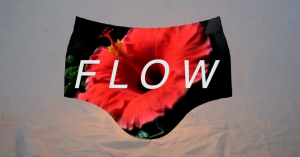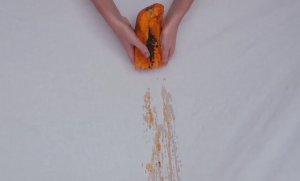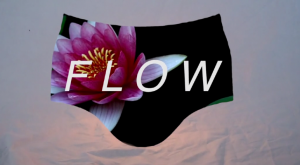The question of whether it is okay to simply observe the world rather than participate within it comes with a myriad of additional questions about the broader social context. If people simply observed rather than participated, nothing would really happen. Observation is a key factor in the process of development, but without some form of participation it would be severely altered and delayed.
The concept of observation is key within documentary film, and questions concerning the extent and effect of observation are important to consider when regarding documentary film. In order to discuss the question ‘What is wrong with simply observing the world?’ I will be looking at the origins and development of documentary film as a genre to examine the shift in the role and importance of observation.
Documentaries present an argument about the world. Although not always explicitly stated, filmmakers are driven to create a representation of a version of reality they find important. It is also essential to remember that most documentary films are not claiming or attempting to be the whole truth. They are a version of the truth, an idea or argument based within the filmmaker’s personal reality and perspective. Furthermore, documentary film is a highly constructed medium, with decisions made at every stage of the production process affecting the argument or idea ultimately presented.
Pioneer documentary director Dziga Vertov believed documentary to be the essence of all cinema, describing it as ‘film-truth’ or Kino-Pravda. Driven by the vision of capturing fragments of everyday life and organising them to present a deeper truth that couldn’t be seen by the naked eye, Vertov focused on representing seemingly unremarkable and everyday people (Nichols, 2010). As Vertov himself put it, use of the ‘kino-eye’ meant filming the unaware to ‘..show people without masks, without makeup, to catch them through the eye of the camera in a moment when they are not acting, to read their thoughts, laid bare by the camera’ (Vertov, 1924). Although Vertov received great success, his dedication to innovation meant he experienced difficulty when the Soviet state began to favor a more simple style of representation, known now as ‘Socialist Realism’. A far more formulated style that didn’t align with Vertov’s philosophy of kino-eye was encouraged by the state, and to ‘simply observe’ was no longer enough. Although you would initially think that observing and recording people unaware would produce the most accurate representation of everyday life, this assumption ignores the notion of agency in documentary. Is it fair to observe and form a judgement of a person (or a group of people) when they are unaware that their actions will be used to represent them wholly? Perhaps too large a question to address properly in this form, still an important one to raise.
In the 1930s filmmaker John Grierson convinced the British government to start producing films in a similar way that the Soviet state had: with the purpose of creating a sense of national identity with its own political agenda (Nichols, 2010). Grierson saw the role of the documentary filmmaker similar to that of an orator (someone who speaks), and provided what is now the prototype of documentary, where the filmmaker inserts his or her own values into the product. Many of Grierson’s films were designed to educate the public and encourage change but the people who appeared in the films often seemed distant, not speaking for themselves but having people speak for them. In the 1935 film Housing Problems the issue of poor housing conditions in Britain is addressed, with people living in public housing seen talking to the camera about the poor conditions. Although this is a step away from Vertov’s strict kino-eye techniques there is still a barrier felt between the subjects and the audience. The subjects appear emotionally detached as they describe their homes, with the voiceover addressing the audience in a very factual and almost dehumanising matter. It is obvious that the voiceover isn’t addressing the type of people represented in the film, but a higher class. The lack of involvement of the filmmaker with the subjects creates a one-dimensional representation of the subject at hand, with the audience not feeling the emotional strain of the subjects that is integral in social change regarding such a topic.
Documentary film has undergone huge changes since the days of Vertov and Grierson, with the form being challenged and shaped through filmmakers pushing the boundaries of observation. The participatory mode, which Nichols describes as when ‘..the filmmaker does interact with his or her subjects rather than unobtrusively observe them..’ (p179) was popularised in the 1960s with the introduction of new technologies that allowed for sync sound recording on location. Now most commonly identified with the works of filmmakers such as Michael Moore or Louis Theroux, the participatory mode is almost the complete opposite of observation. All participation may start with observation but the insight and context gained when a documentary strives to do more than simply observe is incomparable. When an audience is offered the opportunity of insight into a subject’s perspective and emotions the chance of social change becoming a reality seems much higher. Furthermore, experimentation in documentary can often create the most emotionally charged viewing experiences, with experimentation of documentary form not something synonymous with simple observation.
The question ‘What is wrong with simply observing the world’ is impossible to answer coherently and completely within 1000 words but my conclusion is that there is a lot wrong with simply observing the world. Simple observation doesn’t allow the subject agency and creates a detachment in the emotional engagement, one of the most integral aspects of a documentary that strives to create change. Filmmakers must give subjects the chance to speak for themselves, and to be represented in a way they deem appropriate.
Nichols, Bill, 2010, “Introduction to Documentary, Second Edition.” Bloomington: Indiana University Press, pp. 142-211





